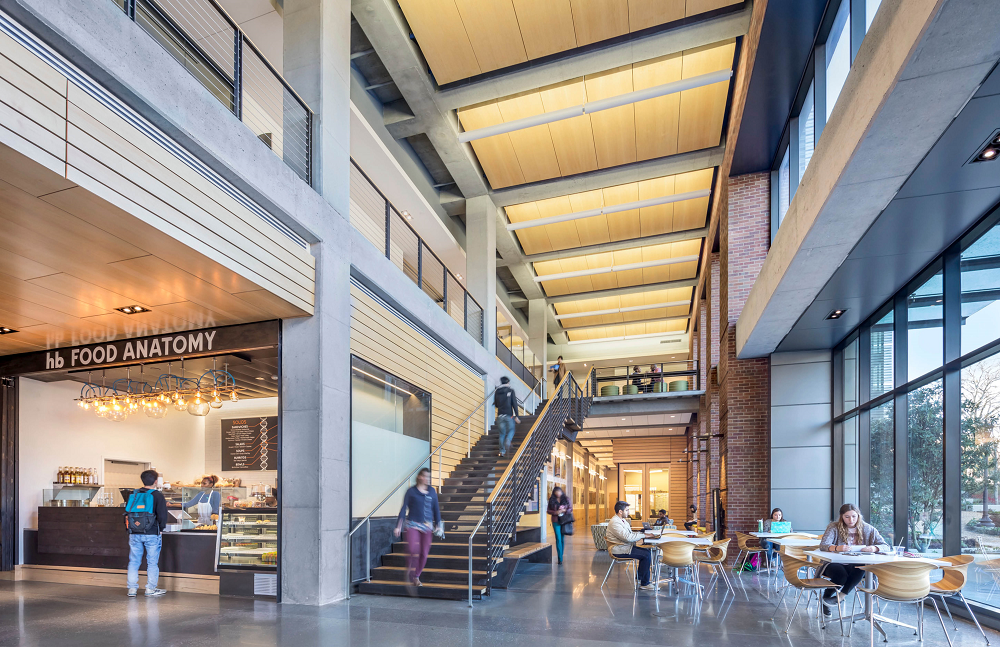
By Chris Hammer and Jennifer Tsau
Chris Hammer, of the forthcoming blog, Building Behavior, and Jennifer Tsau, CEO of Keewi, an energy management tool company, spoke last fall at AIA COTE® East Bay monthly meeting about behavioral research and a tool of interest to the design and energy communities.
Many health issues that have a behavioral component have competed for public attention in recent decades--think of seatbelts, drunk driving, smoking, and exercise. Recently there's been an explosion of behavior change efforts (such as efforts to encourage retirement savings) even at the public policy level.
In the AEC and energy communities, attention is being paid to the energy savings that are possible with behavior efforts. Energy savings from behavior adjustments can range widely. A 2012 American Council on Energy Efficiency study suggested that energy savings attributed to the reviewed energy behavior programs vary from 4 percent (savings from a standalone behavior program) to nearly 75 percent (savings on a comprehensive project in which a behavior program is a component).
One of the more well-known behavior-based concepts is Richard H. Thaler and Cass R. Sunstein’s nudge theory. A nudge, as Thaler and Sunstein define it in their book, Nudge: Improving Decisions about Health, Wealth, and Happiness, is “any aspect of the choice architecture that alters people’s behavior in a predictable way without forbidding any options or significantly changing their economic incentives.
They offer two approaches to how we process information. System 1 is fast, automatic, and susceptible to environmental influences; System 2 processing is slow and reflective. When we face a situation that is overly complex for our cognitive capacity, or we’re under time constraints, System 1 processing takes over our decision-making. A nudge alters the environment so that when we use System 1 decision-making our resulting choice is the most positive and in our best interests. An example of such a nudge is switching the placement of junk food in a high school cafeteria, so that fruit and other healthy options are prominently located while junk food is inconveniently located. Another example for architects is prominently locating stairs in a building to encourage exercise (and save energy) or making stair use more fun.
The design and energy efficiency communities are learning from the public health realm in terms of how we change people’s behavior to encourage more energy saving habits. One of the most successful energy programs is run by Opower (now owned by Oracle), a Virginia-based software-as-a-service company that partners with utility companies to improve energy efficiency. Opower uses social norms to engage residents, by comparing a customer’s electricity use to that of their neighbors.
Most behavioral programs focus on residential customers, but a few, such as Pacific Gas & Electric’s Step Up Power Down, focus on commercial building occupants. Keewi has another take on user behavior for energy good. Keewi is a socially driven energy management company that is designed to bring awareness, control, and insights on energy usage into buildings without any infrastructure upgrades. Keewi offers a solution using plug-load monitoring to enable building managers to visualize real-time data analytics of energy consumption, empowering occupants and managers to reduce waste. mobile-based app allows building occupants to see their individual energy footprint, control their usage, and compete with co-workers to conserve. A web-based app for facility managers shows overall energy consumption as well as actionable insights on plug load consumption. Keewi has been deployed in higher education buildings, such as the University of Maryland, as well as K-12 schools and commercial real estate buildings and has achieved energy reductions of 30 to 50 percent for their clients.
Chris Hammer has a multi-disciplinary background with degrees in Sociology and Architecture. This spring she will be launching her new blog Building Behavior. She is also a project coordinator at Brightworks Sustainability. For more on subscribing to the new blog, contact Chris at chammer@sdplusb.com.
Jennifer Tsau is the co-founder/CEO of Keewi Inc., a company combining socially driven energy management tools with IoT and big data to make buildings more efficient.